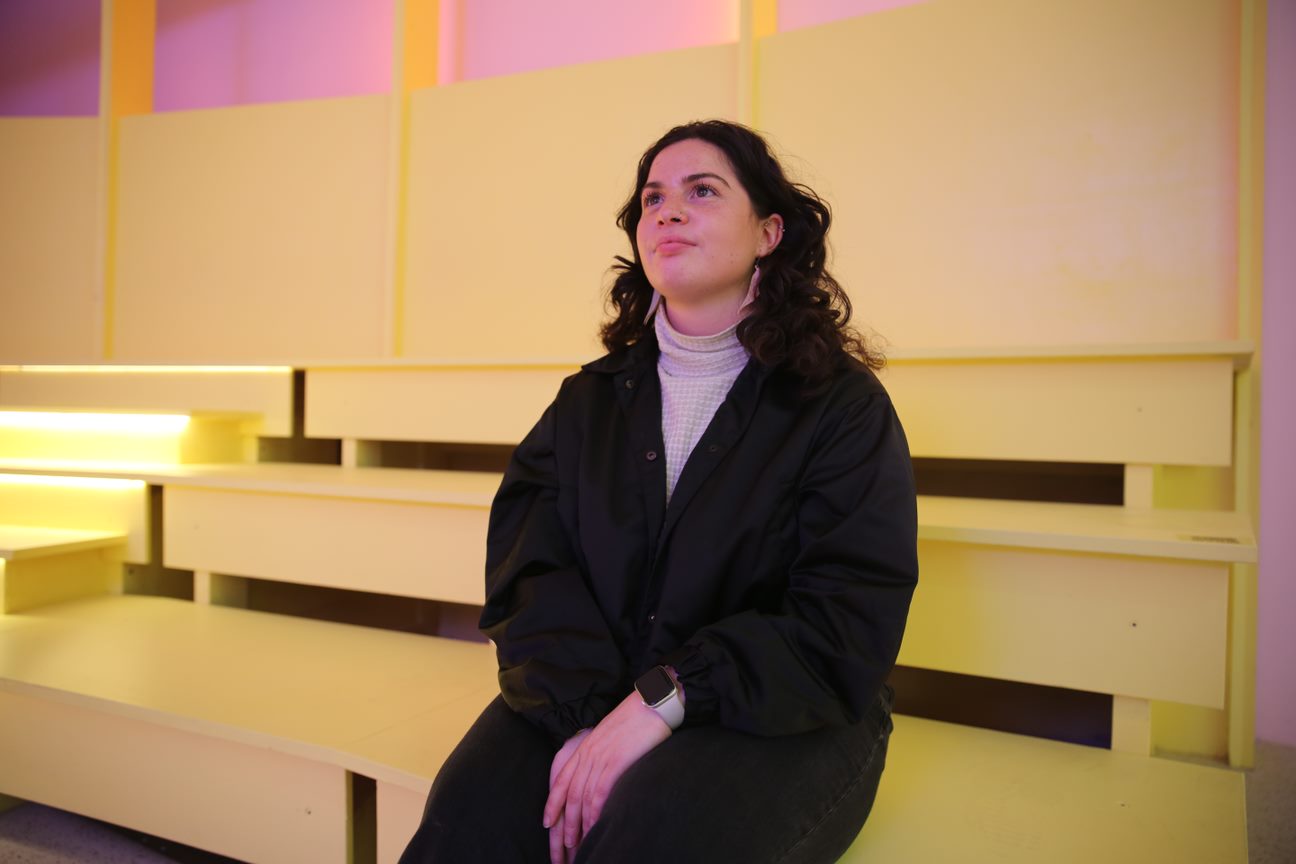'Gowidja (After)': Moorina Bonini's vision of an Indigenous future

Moorina Bonini is a Yorta Yorta, Wurundjeri, and Wiradjuri artist whose practice is deeply informed by her Aboriginal and Italian ancestry.
Since graduating with a Bachelor of Fine Arts (Honours) from the VCA in 2018, Bonini has been challenging colonial narratives about First Nations people through her practice, which is firmly grounded in her connection to family, Country, and Indigenous Knowledge systems.
Bonini's latest work, Gowidja (After), recently presented at the National Gallery of Victoria’s Melbourne Now exhibition, offers a striking reflection on the history of First Nations people while casting a new vision for the future – all through an Indigenous perspective.
We sat down with Moorina to discuss her work Gowidja (After), her creative journey, and her advice for the next generation of artists. This is what she shared with us:
Hi Moorina, could you please tell us about yourself?
Hello, I'm Moorina Bonini, a proud descendant of the Yorta Yorta Dhulunyagen family clan of Ulupna and the Yorta Yorta and Wurundjeri Briggs/McCrae family.
What informs your work as an artist and researcher?
My practice is informed by my Indigenous Knowledge systems, including my family, Country, dreaming, friends, and my 'mulana', or spirit. These entities and beings shape all the stories that come through my artmaking. They impact how I view and understand the world and my experiences.
I'm always trying to make sense of the world through my practice, and I'm always doing that with my family, friends, and community alongside me. My practice embraces a collective, collaborative way of thinking and making, and I wouldn't be able to do the work I do without them.

What can you tell us about your work in Melbourne Now?
Gowidja (After), the Yorta Yorta term for 'after', is the title of my work for Melbourne Now. It weaves newly filmed and found footage into a narrative reflecting on First Nations history and envisions a new future for First Nations people.
Gowidja (After) challenges the existing order, proposing a future of decentralisation of Western institutions and alternative ways of engaging with Indigenous culture, cultural material, and people, all from an Indigenous perspective – my perspective.
How does it feel to be included in Melbourne Now?
It's an incredible privilege to showcase Gowidja (After) at Melbourne Now, especially among such a diverse group of talented artists. Some of the artists accompanying me in the exhibition have greatly influenced my practice, and I have long admired their work. Showing in the exhibition feels like a pinch-me moment.
How did your time at the VCA support your practice?
My time at the VCA was pivotal. It's where I found my artistic voice and developed a passion for practice-led research. My studies at the VCA gave me the skills and confidence to speak about artistic practice from an intersection of making and research.
What advice would you give to the next generation of First Nations artists?
My advice to the next generation of artists is to explore all the various modes of storytelling in your creative practice. Our stories and connectedness to our mobs and Country inform us of who we are - always remember this. Draw upon these connections to help you articulate your own story.